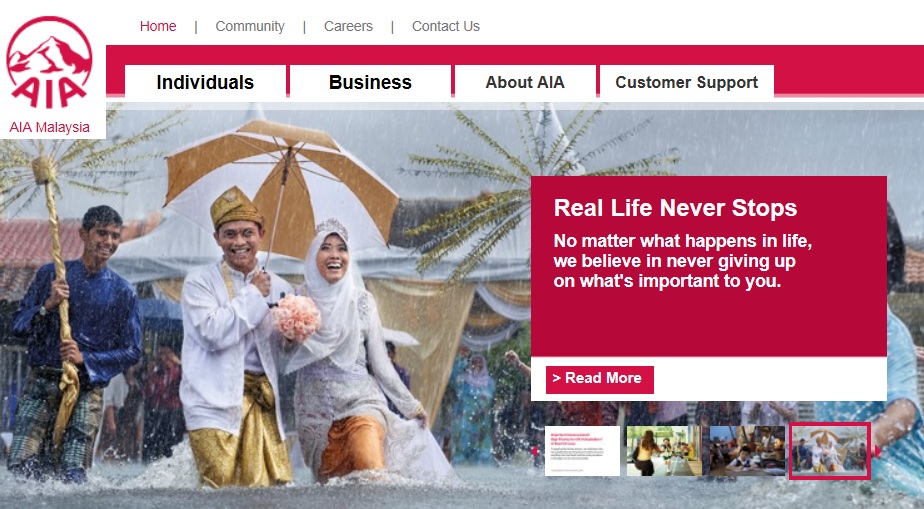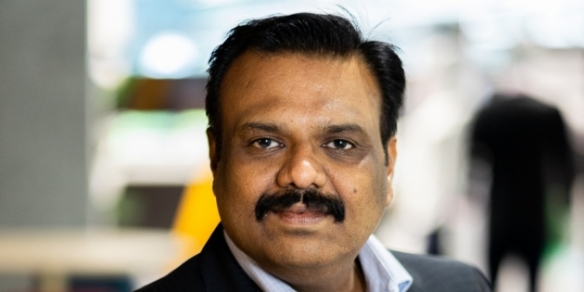Big mobile push at AIA
By Karamjit Singh December 13, 2013
- Innovation efforts and attracting GenY centred on mobility, says CIO
- Big data not an immediate priority, no business case for outsourcing

MOBILE is a big focus for American International Assurance Bhd (AIA), with its chief information officer Teh Kim Leng describing it as “the centre of our innovation efforts.”
It will drive both the agency experience for internal users, and its customers. The first tactical execution of this strategy actually kicked off in May with the introduction of its Interactive Point-of-Sale (iPoS) designed for use on the iPad. “Internally, we are only going to use the iOS platform,” says Teh.
iPoS enables policies to be underwritten and processed in less than an hour. The application not only reduces the processing time from the conventional two or three weeks, but also reduces the carbon footprint as the entire process is paperless.
In July, the company rolled out an iPhone app that allows its 2.6 million customers and agents to locate the closest AIA panel clinic to them. “We are the first to roll out such a service in the market,” claims Teh.
The launch of the app also marks the next phase of AIA taking the advantages of mobility to its customers. “We are already very strong in using mobility for our agents and distribution, but there is a gap in the customer service side and we need to fill that,” he says.
In the works is an app that would allow customers to check their own policy status and make payments. This is part of the multipoint strategy AIA is aspiring to, says Teh, claiming that it is already very strong in physical channels, call centres, IVR (interactive voice response) and online.
This mobile strategy is seen as especially important to attract Generation Y to the company, both as customers and as talent, says Teh. And while the iOS is the platform of choice internally, the company will roll out Android-based services too for its customers, in addition to iOS, but not on the BlackBerry.
While mobility is a strong focus for AIA, Teh shares that big data is not an immediate priority. While the concept of big data, from an analytics point, is not new to the insurance industry, he says that tapping the data to be used in an enterprise context is not easy and a different ball game altogether.
“There are some challenges. For instance, we are not a consumer company where our customers have frequent purchases. You can have a customer who buys a policy and does no other transaction with us for years, which means the data you have on them is not current,” he explains.
Which is why AIA is currently running ‘Project Connect,’ where it is applying some analytics criteria to identify which customers it should reach out to and reconnect with. The target is customers whom agents have not contacted for at least three years.
 There is also the issue of cost and regulations around big data, with the tools not only being pricey, but also requiring a large associated cost of storing that data due to; the industry being regulated tightly in terms of how customer data can be stored electronically.
There is also the issue of cost and regulations around big data, with the tools not only being pricey, but also requiring a large associated cost of storing that data due to; the industry being regulated tightly in terms of how customer data can be stored electronically.
“Add to that the requirements of the Personal Data Protection Act and you can see why we have not cracked this big data challenge yet,” says Teh (pic).
Part of the ongoing integration efforts between the IT units of AIA and ING Malaysia also involve consolidating their respective data centres into one. To be done over the next 12 months, one of the two sites at AIA or ING will be picked and then expanded into a 1,200 sq ft data centre.
If that does not seem to be very big for an organisation with 2.6 million customers, Teh points out that “servers today do not take up too much rack space.”
The other obvious question is why not just outsource its data centre requirements, but here Teh makes an interesting point about being able to justify the cost: “It is not easy for an organisation based in Malaysia to justify outsourcing to a service provider in Malaysia, because you cannot really leverage on lower costs.”
He notes that one of the regional AIA units has outsourced its data centre to a Cyberjaya-based operator, but this was where there was cost leverage.
“The other reason you would consider outsourcing is to plug any skills gap you have but again, we are capable of operating a data centre and this need is not a push factor for us,” he adds.
With the ongoing company-wide transformation, Teh says the levels of cooperation across all business units has been very strong as everyone is supportive and understanding of the challenges each business unit is going through, especially IT, whose functions cuts across all units.
“Usually end-users are a pain,” he laughs, “but because we are all on a common journey, everyone is pulling together and showing a lot of patience as we move towards becoming a fully integrated organisation.”
Previous Instalment:
AIA adopts ‘best of breed’ for post-integration transformation
For more technology news and the latest updates, follow @dnewsasia on Twitter or Like us on Facebook.


